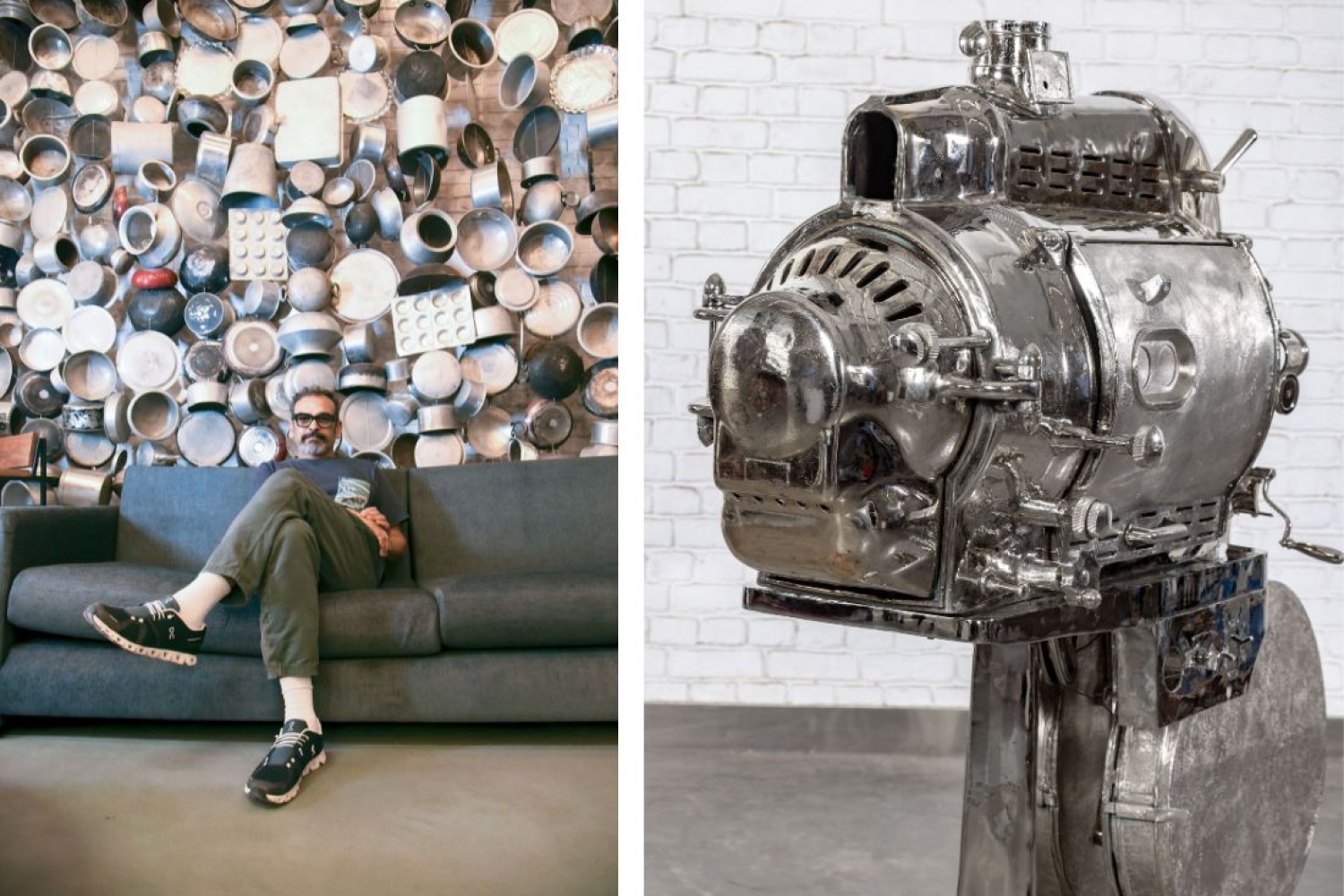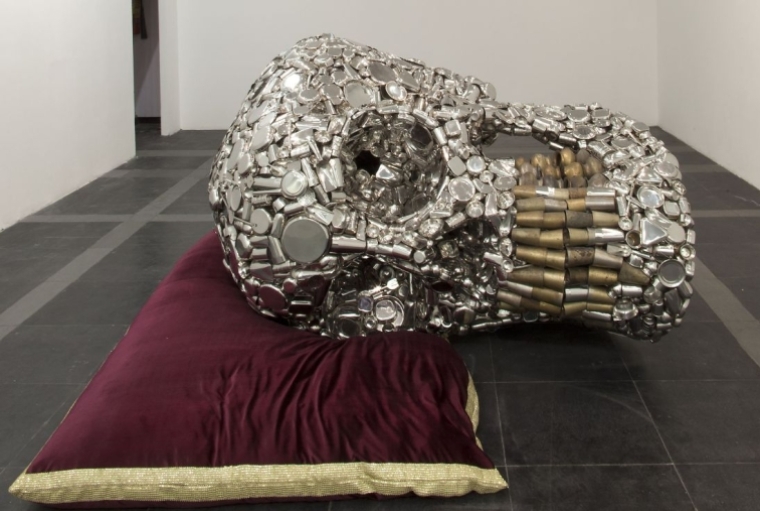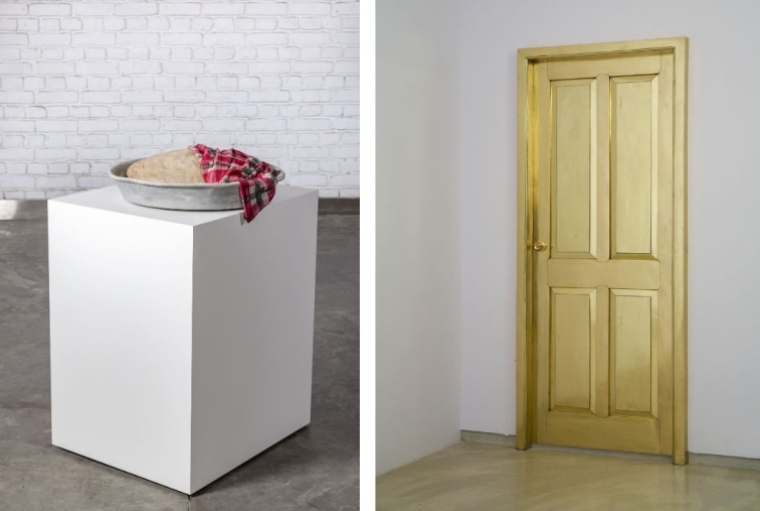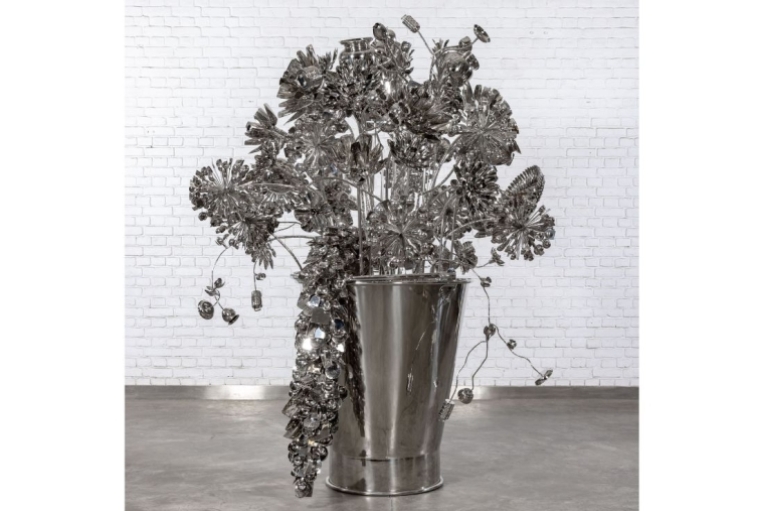

Since the past three decades he has transformed daily objects to evocative art. From not being recognized when he started out to becoming one of the most illustrious contemporary artists of our time, Subodh Gupta has dazzled viewers with his artistry. His large sculptures and use of the bartan reflects the changing economic landscape of our country and explores the Indian spirit and identity. He has engaged in a variety of different mediums, from paint, film, video and performance to steel, bronze, marble, Subodh has constantly created from his own reality and curiosity. His love for cooking, interest in the cosmos and finding stories in found objects gives a new life and purpose to the old and used. After a while I reconnected with Subodh to understand the artist behind the art.

Shruti Kapur Malhotra: You are known for the humble and versatile bartan being your protagonist so how has that relationship evolved? Earlier you used to use new, now you use found and used objects.
Subodh Gupta: Utensils is the signature material of my artwork. But I started using it when 90% population of our country was using stainless steel, the lower middle class, middle class, even upper middle class, everybody was using it at one point. When the stainless steel came, I will say late eighties or early eighties, it was like a luxury item. After 20 years it’s not a luxury item anymore. Now people like ceramic, but middle class family, they still like stainless steel and they’re using plastic and other material. So the home and households are changing, people are changing. Their lifestyle is changing. But since it’s become my signature material, I still use it.

SKM: Yes but earlier you used mass produced stainless steel and now you use found and old.
SG: My interest in the cosmos draws me to used utensils. If you look closely each used utensil looks like a galaxy, the scratches, dents, marks all create a cosmos. The utensils might look alike but if you look closer, each one is etched different and has a different story to tell. The way it’s dented, the way it was banged while cooking. It almost is like a human palm. All our hands are alike, but each of our lines are different and they form our destiny. Similarly for me each utensil has it’s own character. They have their own feeling. Not only that, found utensils come with a memory. It’s not my memory. I’m just guessing the story it comes with.
SKM: How beautiful, so do you always buy them in their original form?
SG: Yes and at times the scrap yard people, melt it and they make aluminum bricks out of it. I then create and give a new life and rebirth to the old utensil. I talk to it. I wonder how many people cooked in it. How many families ate from it. Thousand simultaneous thoughts come to my mind. I wonder if the families were happy, sad, angry. My thoughts multiply and go to infinity and when that happens it’s like a cosmos it’s like a expanding universe. I like that feeling. I like that journey. In order to find what is beyond our vision, beyond earth the answer will not come from going to the galaxy and finding out, the answer is here on our planet earth.
SKM: It’s like your new exhibit The Way Home that celebrates and captures the last two decades of your artistic journey - you have travelled the world with your art but have always had a strong pull and connection to Bihar, your home. Can you tell us about your new exhibit.
SG: The show is curated by the Director General of the museum Mr. Anjani Kumar Singh, the exhibition will feature twenty major sculptures from the years 2003 to 2024, as well as a small group of paintings. Mr. Kumar has been visiting my studio since the past two, three years. He has a very different way of creating and understanding work. He sees the work from both the personal eye as well as from the curators point of view. There’s just so many works but most of the works are out of country. Only one work I borrowed from a collector. Rest of the works all are from my studio and are artist proof. Also while putting together a show a lot depends on the space the museum has and how much can be given. The museum had very limited space so I could not bring many works therefore we selected the most important works.
SKM: You said that a lot of this was part of your own collection, from your own story. When you are making work, how do you decide that? Is this going to go to a museum ora collector or is it just for you?
SG: Sometime artworks are made for collectors or museums, especially the large ones. The works that resonate most I don’t show to the collector. If I love it too much, I Just keep it aside.
SKM: In that case how personal is your art?
SG: Art is like poetry, extremely personal. I make art for myself first and then for the other. I don’t force my art. A poet writes poetry. Then they each go to a publisher and once the book gets published then million people read it or not. It’s not forced, it’s for the reader to consume or interpret it the way they want. Art has the same meaning and same value, you create for yourself. It must come from within you. Only then original art will be created.

SKM: I am curious to know you use bartans for art – have you ever used it for cooking? Do you like cooking?
SG: I love cooking and have even done a performance with my cooking. I did it in Paris. The American Church in Paris is for immigrants. I made a particular artwork called Very Hungry God, The piece was first exhibited in 2007 at the 'Sequence 1' show, when it was presented on the Grand Canal, in front of the Palazzo Grassi. It’s one of my famous artworks. At that time there used to be a soup kitchen in Paris. And I remember it came in the news, that they were making soup with pork so the Muslims won’t eat it. So I did the vegetarian soup for a thousand people outside St. Bernard Church that was my soup kitchen performance. That was my first public performance with my artwork. And since then I have done quite a few at different art events. And now because I love cooking so much I am opening my Studio Kitchen, a place where I will invite people to eat and the proceed will go to charity.
This is an all exclusive excerpt from our Bookazine. To read the entire article, grab your copy here.
Words Shruti Kapur Malhotra
Date 05-08-2025